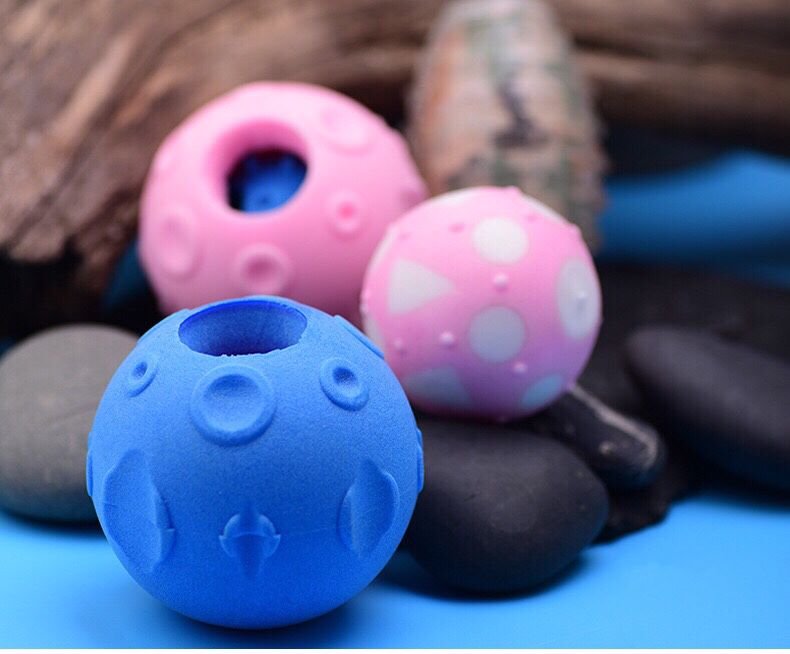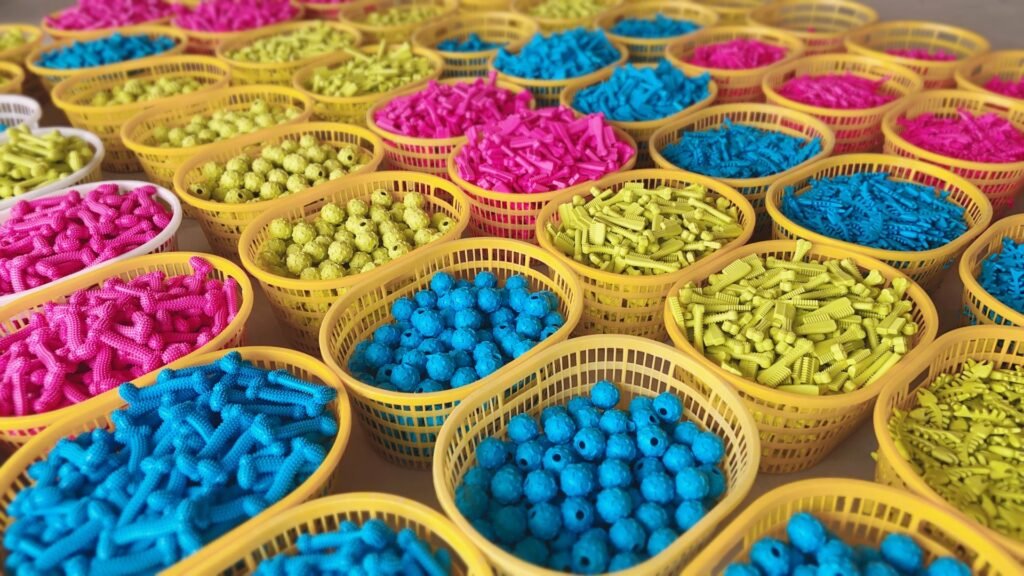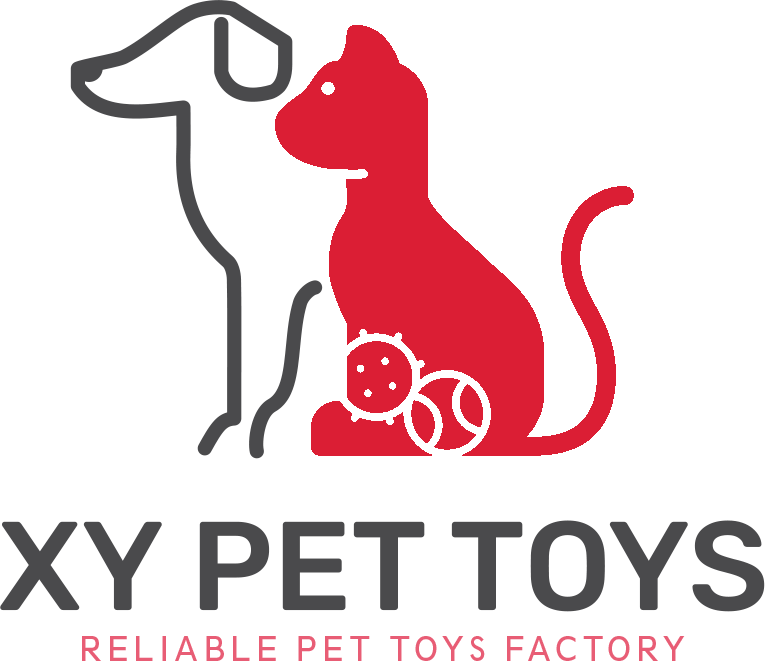Because of its effective and desirable properties in quality manufacturing processes, most industries choose TPR for its rubber and thermoplastic capabilities. These characteristics are conducive for easy injection molding and extrusion techniques applied during processing and product design.
Thermoplastic Rubber Material (TPR) has been progressively finding expansive application and large-scale production for industrial use since the 1970s.
According to the American Pets Product Association (APPA) report that was announced at the 2021 State of the Industry presentation. The pet industry has been on a growing trajectory since 1988 and the US citizens alone spent an actual $103.6 Billion on their pets as of the year 2020.
TPR as a go-to raw material has been powering this industry and has everything to do with the splurging expenditure observed over the years. Especially in the pet manufacturing industry, thermoplastic rubber has been remodeling the entire dog toys production line.
In this article, we’ll dive deep and dissect the ins and out of how thermoplastic rubber is fueling the entire dog toys market from production to the finished consumer products.

What Exactly Is TPR Rubber?
Going back to chemistry, thermoplastic rubbers are synthetic rubber materials belonging to the class of styrene thermoplastic elastomer (TPE) plastics made from combining both plastic and rubber materials (copolymers).
TPR rubber share the elastic flexibility of rubber just like elastomeric latex, and they also possess the melting and fabricated shape molding properties of thermoplastic materials.
The SBS (Styrene-Butadiene-Styrene) polymer in TPR make-up has styrene-based segments in the chemical structure hence the superior strength and the excellent recyclable elasticity properties compared to other plastics and natural rubber materials with cross-linked bonds that don’t really recrystallize when deformed.
Compared to their counterparts–The Thermoset materials, Thermoplastic rubber material allows remodeling and reusability even after curing to take a new form and structure because of the thermoreversible pliable network while the former only strengthens to a permanent structure and shape on initial heating with no reversible reaction for subsequent remodeling in future.
Thermoplastic Rubber Materials And Dog Toys Manufacturers
Having the best and quality materials is very crucial in observing quality control, integrity, and maintaining high-end bulk products for a business’s success to soar in any competitive market.
In addition to ease of working, TPR rubber offers a wide range of convenient processing, planning, and timely design capabilities for dog toy manufacturing companies because of the following reasons;
1. TPR Pliability, Eco-Friendliness, and Recyclability
Just like ice cubes or butter, thermoplastic rubber has the ability to be moldable or pliable (bent-flexible) within a set designer temperature range when it’s in a molten-liquid state and will assume the designer solid formed state upon cooling.
For a manufacturing company aiming to have an assortment of products, this is not the case with thermoset plastic materials which will only assume a permanent shape like a cooked pancake upon curing because of the chemical cross-linking pattern when processed in the final product.
The TPR material design process doesn’t invoke chemical cross-linking between the polymers’ chemical structures like observed in other rubber and plastic materials. If the thermoplastic finished product doesn’t fit the desired planning design, the elastomeric TPR rubber can be reheated, reprocessed, and remolded to achieve a new design when recycled for best results.
The pliability of TPR rubber comes in handy in developing different dog toy products with different sizes, textures, and shapes –from structured bone designs, feeding bowls, tug toys, to textured treat dispenser ball designs, TPR as a raw material allows for the development of different designs and shapes to form an ideal pet toy assortment plus accessories for all dog breeds.
2. Thermoplastics Ease Of Coloring
The biggest asset for any product in the development stage is the color it’s designed with. Color adds life to products and plays a major role in influencing the purchasing power of one product over the other. For this reason, manufacturing companies are keen on developing products that have appealing colors that will match their end-use in the consumer market.
TPR rubber comes in handy when it comes to color selection and matching by offering high clarity and excellent custom colorability to product designers and manufacturers. Not only do TPR rubbers incorporate a variety of colors to enhance dog toys’ visual appearance with bright attractive colors but they also offer luminous, fluorescent, and glow-in-the-dark capabilities in the end products developed.
Thermoplastic materials’ ease of coloring allows for different coloring techniques used in the dog toys manufacturing industry. Compounding, masterbatching, dry pigment mixing, and solvent coloring are the most commonly deployed methods in TPR injection molding for an efficient production process and great aesthetics.

3.Convinient And Timely Processing Cycle
Pet product manufacturers have a lot of factors to consider when selecting an excellent raw material with which to develop dog toys. Convenient manufacturing and the processing time cycle it will take to fully design a product is key for an efficient and cost-effective production line.
TPR offers the best of both worlds since the raw material doesn’t require curing, reinforcement, or reliance on chemical stabilization using different systems and agents altogether. Thermoplastic rubber is also relatively easy when in coloration and dyeing compared to other materials like PVC, silicone, or conventional plastic materials. This renders thermoplastic as raw material to be a better option for ease and quality manufacturing.
Despite TPR readily bonding to other plastic material with high adhesion, TPR as a raw material is also a great option for manufacturing companies because of the timely processing capabilities as well. TPR has very fast cycle times and can be processed relatively quickly through the old plastic manufacturing types of equipment in a convenient way. Injection molding, extrusion techniques, and blow molding are all compatible with TPR rubber.
4. TPR Quality & Sustainable Durability
As a high-quality synthetic material that offers smooth performance and optimum functionality, thermoplastic rubber material guarantees the manufacturing designers long-lasting and sturdy pet toy products. Especially for dog toys, TPR’s high tensile strength can withstand both aggressive and destructive chews for a long time.
TPR enhances the quality and durability of dog pet products thanks to its wide range of shore hardness (rubber hardness measurement by durometer). Sustainable end product development needs a shore hardness varying from Shore A to Shore D for making hard and tough toys like bones and frisbees, or soft chew toys like treat toys using the same TPR material.
In addition to handling extreme temperatures very well, dog toy manufacturers love that TPR is also an excellent abrasion-resistant, stylish, non-tacky, and weather-resistance raw material that’s perfect for pet chew toys.

Why Dog-Owners Prefer Buying TPR Rubber Pet Toys
In a rapidly growing consumer market in the pet toys industry, there’s an increasing demand for safe interactive pet toy products. Dog and cat owners are now paying more attention to the health safety and benefits of molded pet products before buying them for their animals.
With improved tear strength and excellent weather and abrasion-resistant characteristics, dog-owners love buying TPR rubber manufactured pet toys because of the long-lasting durability. Despite being exposed to repetitive chewing and constant gnawing, TPR rubber holds strong relatively well for a long time before being deformed completely.
Pet owners are also influenced to buy their pets TPR rubber toys since the raw material is sound for dogs’ health and general well-being. Not only does TPR rubber satisfy a dog’s natural urge to chew with its excellent dimension stability in the end products, but also TPR does not contain any risky and harmful industrial chemicals like BPA and phthalates which improve plastics elasticity and softness.
Another reason why most pet owners prefer TPR rubber dog toys is that the rubber material is known to be non-tacky and dirt repelling. This helps pet owners with easy maintenance and cleaning of the pet toys as TPR material is water-proof and dish-washer safe.
Lastly, dog owners love TPR rubber dog toys because they have very low extractability. Extractables are substances that can be detached from the surface of a pet product under extreme conditions like very high temperatures and aggressive chewing by dogs. Thermoplastic rubber also helps to develop lightweight, chemical, and u.v light resistance toys that are safe.
Dogs And TPR Rubber Interactive Toys–Why Do They Love Them?
Whether with their owners around or just alone with their toys, dogs love playing interactive games just to stimulate their mental activities and engage their primal senses of sight, smell, and chewing. Thermoplastic rubber dog toys help dogs achieve all these because of the varied textures and the mix of characteristics that keeps the animals’ interest.
The wide range of colors that can be achieved in designing attractive dog toys makes TPR rubber to be dog’s favorite material because of colorability. The special effects from the vibrant colors keep dogs interested in their toys over a long time without fading.
TPR also makes an excellent raw material for dog toys because of the ability to offer an expansive range of elasticity and soft hardness. This is not only safe for the dogs’ gums and oral hygiene, but dogs also enjoy the soothing massage in addition to their clean teeth after playing with their TPR toys.
Another great addition to dogs’ well-being from thermoplastic-made toys is that they are relatively light in weight because of TPR’s high strength to weight ratio. This means dogs of all breeds will find it easy to carry their toys around and play with them wherever they go. Thermoplastics also offer an amazing gripping feature in addition to their non-slip characteristics.
The Health Benefits And Pets’ Safety In Interacting With Thermoplastic Rubber Dog Accessories
Unlike the plastic and vinyl pet toys that have been proven by the US Consumer Product Safety Commission (CPSC) to contain cancer-causing chemical DINP (Di-Isononyl phthalates) when softening PVC plastics and making them pliable, TPR in comparison is a better pick for beneficial and healthy results unlike the former.
Thermoplastic rubber in pet toys will help alleviate pain in teething pups and large dog breeds alike because of the naturally textured outer smooth surfaces. TPR material is fully FDA compliant under USP class Ⅳ demands and is phthalate chemical-free. This makes thermoplastic material sound to any pet that interacts with the toys or any other accessory made using TPR.
Pet toys like the interactive IQ treat dispenser made with TPR guarantee a firm grip on any surface and preventing them from sliding and making a mess in your home. The material is also noise-reducing and vibration damping. TPR also stands out in promoting a healthy pet lifestyle as the material is free of lead, PVC, heavy metals, and latex as well. These compounds are hazardous and will compromise the safety of your pet.
TPR as an ideal material for any pet product is eco-friendly, non-toxic, and hypo-allergen as well. If any of the pets or their owners suffer from any allergic reactions, TPR meets a healthy lifestyle and promotes positive behavior to pets.

FAQ
1. How long before TPR rubber breaks down?
Thermoplastic rubber is a high-performance material that offers abrasion, coloring, and weather resistance capabilities. TPR is available in varying shore hardness to provide both hard and soft flexible characteristics but when subjected to continuous usage can deform permanently.
2. Is TPR rubber silicone?
TPR is a synthetic material that turns to a molten state when heated and later on solidifies to a formed state when cooled just like ice cubes or Cheese hence the name thermoplastic. However, Silicone on the other hand has a different chemical bonding capability that only allows them to form one permanent structure on heating just like pancakes with no reversible reaction.
3. Is TPR rubber Eco-friendly?
TPR is definitely an eco-friendly raw material that is used in manufacturing pet toys. TPR is eco-friendly because it can be recycled or remolded even after an initial molding process is complete to make another design using the same material when heated to its liquid-molten state again.
4. Is TPR rubber safe for dogs?
TPR is absolutely safe for dogs because the material is non-toxic, lead, BPA, and phthalate chemicals-free which can be disastrous to any animal or child as well. TPR has very low quantities of extractable as well due to its non-migratory characteristic.


